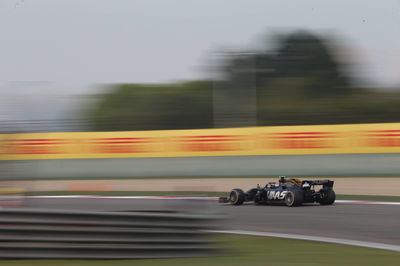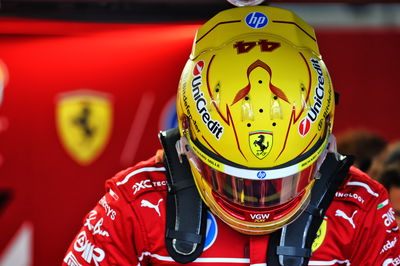Decisions during Racing Point’s future crisis still being felt – Green
Racing Point technical director Andrew Green accepts his team’s slow start to 2019 is down to the crisis it suffered midway through last year when it was plunged into administration.
The Silverstone-based squad faced an uncertain Formula 1 future when it was put into administration during a takeover process which was completed last August to see a Lawrence Stroll-led consortium gain ownership of the team from Vijya Mallya.

Racing Point technical director Andrew Green accepts his team’s slow start to 2019 is down to the crisis it suffered midway through last year when it was plunged into administration.
The Silverstone-based squad faced an uncertain Formula 1 future when it was put into administration during a takeover process which was completed last August to see a Lawrence Stroll-led consortium gain ownership of the team from Vijya Mallya.
Green, who has remained with the team throughout the takeover and transformation from Force India to Racing Point, says he anticipated a slow start to 2019 given vital car design and early development phases were made during the crux of its future uncertainty which hampered its plans.
Despite the frustrations, Racing Point has been able to score points at every race so far in 2019 and sits in eighth place in the F1 world constructors’ championship thanks to Sergio Perez’s sterling drive to eighth place at last weekend’s Chinese Grand Prix just one point behind both McLaren and Haas.
“It’s been a difficult start. I think the competition is incredibly tight in the midfield this year – tighter than I’ve known it for a long time. I think we’re just slightly behind,” Green said during the race weekend in China. “We’re not a long way behind but I think our weaknesses were probably exposed in the first couple of races.
“We’ve got a plan to obviously bring us back to our target level of performance, it’s going to take some time.
“We have to remember that the car was originally conceived in the mid to late part of last year, when the team was in serious trouble. We were really struggling at that point.
“We had to make quite a few decisions about the car and the architecture of the car back then, not really knowing what was going to happen with the team, whether there was even going to be a team. We are still getting out of that. It will still take some time.”
Despite his concerns, Green is optimistic the Racing Point squad can claw back any lost ground in the midfield fight over the course of the 2019 campaign through its accelerated developments through fresh funding from its new owners. Under its former guise as Force India the team was heralded for maximising its development and potential throughout a season while running on a smaller operating budget compared to some of its rivals.
“We’re in a much better place now, but improvements take time,” Green said. “It takes time to build the infrastructure up to where we need it to be. It’s easy now to say that we have the bills paid at the end of each month, which we never used to be able to say, so it’s one less thing to worry about.
“But there are more things to think about, as far as the performance of the car, where we’re going in the future, which is something we’re thinking about a lot, where the regulations are going and where we’re going to go in the future. There’s a lot to think about now.”
Green’s key questions focus on the 2021 F1 technical regulations shake-up and what will be permitted in terms of team partnerships and listed parts.
Green says Racing Point’s use of the Mercedes wind tunnel in Brackley is “purely efficiency reasons”, as the team is based close by in Silverstone, and while he’s eager to maintain a strong relationship with the German manufacturer he accepts it will ultimately be decided on the level of partnership allowed under the 2021 rules.
“I think everything is being discussed for 2021, I think that’s all on the agenda,” he said. “It’s where we go forward as a team, thinking ahead for 2021.
“We want to build our team to be the most efficient team based around those regulations and when those regulations are finalised we will have a clear idea of what we need to do.”











